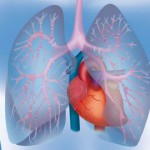One study from Dr. Hummers and colleagues demonstrated that, among patients with SSc, an increased number of telangiectasias was strongly associated with the presence of pulmonary vascular disease.2
A diagnosis of pulmonary hypertension ultimately relies on measurements from a right heart catheterization. In 2022, new guidelines from the European Society of Cardiology and European Respiratory Society modified the definition of pre-capillary pulmonary hypertension such that the threshold is now a mean pulmonary arterial pressure (mPAP) of >20 mmHg rather than >25 mmHg.3 Several clinical algorithms, including DETECT, have been developed to assist physicians in selecting which patients should be referred for right heart catheterization.
Dr. Hummers implores clinicians to be attuned to pulmonary hypertension screening because the goal is to catch the condition before it becomes symptomatic. Screening is particularly important in seeking to reduce mortality through early treatment. Currently, fifteen treatments are approved for patients with PAH by the U.S. Food & Drug Administration (FDA).
Raynaud’s Phenomenon
Dr. Hummers discussed her stepwise approach for managing Raynaud’s phenomenon as a symptom of SSc. Her approach includes non-pharmacologic interventions, as well as some of the same medications employed for the treatment of PAH.
Non-pharmacologic interventions that can be used for Raynaud’s with patients, said Dr. Hummers, include avoiding the cold, reducing stress/anxiety, preventing repetitive trauma to the hands, quitting or abstaining from smoking, and eschewing aggravating medications, such as beta blockers and serotonin agonists, as well as caffeine.
In patients with mild to moderate symptoms, Dr. Hummers will initiate a sustained release dihydropyridine calcium channel blocker (i.e., amlodipine, nifedipine or felodipine). If symptoms persist or if these medications are not tolerated, other options include PDE-5 inhibitors, such as sildenafil; topical nitroglycerin ointment; angiotensin receptor blockers; d and selective serotonin reuptake inhibitors.
ILD & Its Treatments
Next, Dr. Hummers discussed ILD in SSc, a topic of importance given the high morbidity and mortality associated with this manifestation of disease.
Dr. Hummers noted that about 25–90% of patients with SSc have lung involvement, and the most common pattern is nonspecific interstitial pneumonia (NSIP). She routinely screens patients for ILD with computed tomography imaging of the chest at time of initial evaluation. She is cognizant of the fact that only about 15% of patients lung disease progression over time.
Regarding evidence for treatment of ILD, the Scleroderma Lung Study I (SLS I) demonstrated that patients with symptomatic SSc-related ILD who were treated for one year with oral cyclophosphamide had improved on lung function testing that was maintained for 24 months.4 In the Scleroderma Lung Study II (SLS II), two years of treatment of SSc-related ILD with mycophenolate mofetil resulted in significant improvements in lung function with better tolerance and less toxicity than treatment with cyclophosphamide.5
